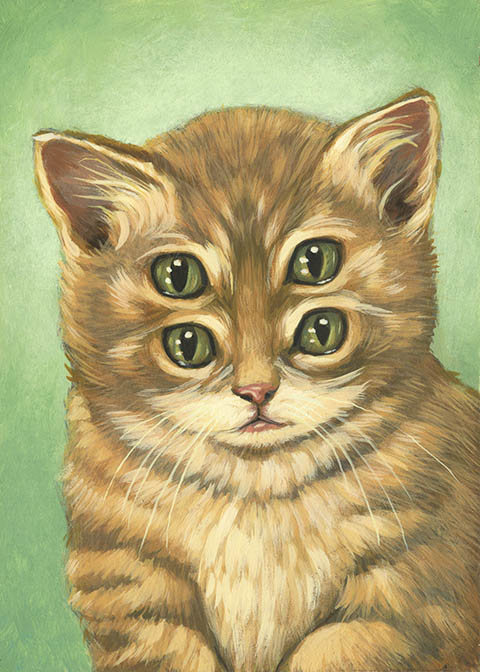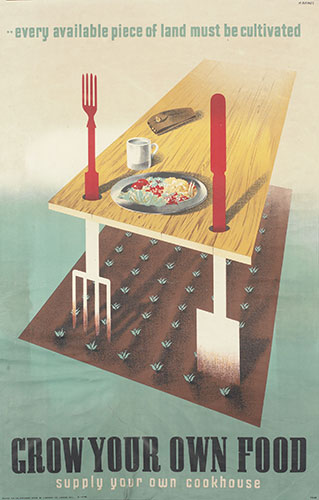Here I am showing some research in different University degrees which I may be interested in.
Illustration with Animation - Manchester MET University
UCAS code: W217
Length: 3 Years full-time
Entry requirements:
UCAS Tariff points: 240-280
Points to be obtained from full A levels or equivalent:
240 at A2 or equivalent (such as BTEC National at Level 3 or Advanced Diploma).
Level 3 Foundation Diploma in Art & Design would be considered in combination with any of the above.
Specific subjects required: GCSE grade C (or acceptable alternative) English Language
Access qualifications: A relevant Access to HE Diploma will be considered for entry to this course.
Portfolio required as part of the selection process? Yes
Interview required as part of the selection process? Yes
International Baccalaureate: 27
IELTS Score: 6.0. with no element below 5.5
Additional requirements: You would usually have to attend an interview and/or provide a portfolio ofwork as part of the selection process.
"-Provides you with the rare opportunity to combine illustration with animation, developing yourself as a
visual communicator at home in a wide range of professional contexts.
-An experimental course that encourages you to be ambitious, curious and reflective.
-Development of traditional and digital skills including life drawing, book binding, etching, screen-printing,
typesetting, drawing on film, working with sound, imovie, Photoshop, inDesign, Final Cut Pro and
website development."
YEAR 1
.Introduction to the three main blocks of the course; drawing, printmaking and animation.
.Development of skills through a series of projects.
.Introduction to possible strategies for solving visual problems and applications which explore context.
.Starting to identify a framework for your own individual practice.
YEAR 2
.Beginning to experiment more fully with own practice and introduction to real life situations
that you would encounter in professional practice.
.Work with text and narrative, make books, experiment with sound and movement and develop design concepts.
YEAR 3
.Work more independently and focus on your particular strengths, deciding which contexts are most
suitable for your visual language.
.Gain the courage to be yourself and the understanding of how and where you may contribute to the wider world of visual communication and practice.
Graphic Design - Manchester MET University
UCAS code: W210
Length: 3 Years full-time
Entry Requirements: All the same as the Illustraion and Animation course also at Manchester MET University.
"-Study trips include gallery, museum visits and international travel most recently to New York.
-Opportunities for work placements throughout the UK.
-Students successes include awards in regional, national and international arenas including Manchester City Council, Greater Manchester Police, D&AD Global Student Awards, Young Creative Network and Openad Talent."
YEAR 1
.Introduction to the studio-based culture of the course through a series of projects encouraging the development of ideas, experimentation with visual language and acquisition of technical skills.
.This is supported by a Contextual Studies programme that places practical elements into a wider cultural, critical and social context.
YEAR 2
.Study more specific areas of graphic design practice through pathway options in print-based or digital media.
.A programme of workshop projects develops both technical and conceptual skills.
.Studio content is developed in liaison with industry and offers opportunities for work experience.
YEAR 3
.Study a series of self-directed options designed to develop a professional portfolio that reflects your individual careers aspirations.
.Your work is supported by a visiting lecture programme that offers a diverse range of perspectives across the whole platform of graphic design practice.
Games Concept Design - Staffordshire University
UCAS code:
G613
Length: 3 Years full-time,
or 4 years with a placement.
Entry Requirements:
UCAS Points: 280
Additional: All applicants are individually assessed on their qualifications, skills and experience.
- A ground breaking design studies course aimed at producing the next generation of computer games and film concept designers with skills required by the computing and computer graphics industry
- Digital arts course content designed and developed by ex-industry artist in collaboration with current industry concept designers.
- Concept design, development techniques and computer graphics taught, covering anatomy, engineering, aviation, architecture, physiology and vehicle design.
- Film industry standard 2D Matt painting and 3D compositing using Combustion and After Effects.
- All core teaching delivered by industry experienced designers, artists, compositors and engineers.
- 3D digital arts modelling for both games design and film using 3D Studio Max, Maya and ZBrush
Graphic and Media design - Hereford college of Arts
UCAS code: W216
Length: 3 years full time, 6 years part time.
Entry Requirements:
UCAS Points: 200
Additional Requirements: Minimum age 18, Successful portfolio interview, Mature Students with related experience
"The graphic and media design industries need designers with innovative and original ideas, who are able to work with a range of processes and formats, and who can respond to the exciting demands of the professional industry.
The BA (Hons) Graphic & Media Design course provides students with the necessary skills and understanding in order to explore and apply the creative potential of digital technology to express ideas, and to resolve design and visual communication problems. The course encourages a wide-ranging and creative approach to uses of graphic & media design within contemporary environments, including the ‘3rd’ screen of mobile technology. Print based communication remains an integral part of the course."
YEAR 1
.During the first year, students start to develop an understanding of fundamental aspects of graphic and media design. These include exploring the creative design process and applying design principles in order to effectively communicate in both print and screen based formats.
.Students are also introduced to creative practice processes which includes modules such as ‘Type, Text & Meaning’, as well as introductions to ‘Interactive Design’, and explorations of ‘Narrative & Sequence’. Throughout the year studio activity is complemented by a supporting Cultural Studies lecture programme. This lecture series will explore and challenge the role of the ‘Media Arts’ within the social, cultural and political framework of the Western world during the Twentieth and Twenty first centuries.
YEAR 2
.
Year two aims to provide specialist skills and knowledge by exploring the increasingly important role that ‘Image and Identity’ takes within society. In addition to the programme of Cultural and Professional Studies, second year students begin formulating a Business Plan for development in year three. In the second part of the year, students are provided with opportunities to explore and challenge our understanding of ‘designing for screen’, and ‘motion graphics’. Students also explore ‘real’ design problems by responding to a number of commissioned ‘live’ briefs and national design competitions.
YEAR3
.In the final year, the course provides close and continued advice and encouragement from the staff team providing a platform on which students are able to develop their ideas and specialism further. Students work in an increasingly self-directed manner, with a developing emphasis on adaptability including: taking responsibility for their studies and working at a professional level. There is an increased emphasis on research, and critical thinking. A major body of work is produced. This forms the basis of a graduate portfolio.
.Students also work towards a dissertation and final Professional-practice Business Plan. This plan is aimed at selected target markets as part of their move towards a professional career. Throughout the course students explore potential areas for employment by visiting design companies, and meeting professional designers for portfolio consultation.
Interactive systems and Video games design - University of Bradford
UCAS code: G473
Length: 3 years full time
Entry Requirements:
If you are offering any combination of GCE A levels, Vocational A levels, AS levels, and Scottish Framework qualifications, our standard offers are:
Three-year BSc - Around 260 points. To include 160 points coming from 2 GCE A levels, or qualifications of equivalent depth and volume. We also require English, Mathematics and a science to at least GCSE grade C level. Key Skills (level 3) and AS or A-level General Studies points can also be included in the points total. No specific subject requirements, although subjects related to course content would be an advantage.
Three-year BA - Around 240 points, depending on course and subject mix. To include 160 points coming from 2 GCE A levels, or qualifications of equivalent depth and volume. We have no essential subject requirements at GCE A level (we accept General Studies), although subjects involving numeracy, ICT and English may be an advantage. We also require English to at least GCSE grade C level and you will preferably have GCSE grade C or above in Mathematics.
Four-year BSc/BA including Foundation Year - 160 points. No specific subject requirements, although subjects related to course content would be an advantage. Candidates must possess Mathematics and English to at least GCSE grade C level.
"Pioneering within higher education, we have been successfully running Games Development courses for over ten years now and offer two distinct pathways. Both routes examine the technical and creative aspects of computer games and interactive systems, emphasising either the production of games art or more technical issues across a range of platforms.
Whichever course you choose, you'll acquire a clear overview of the various software and hardware technologies used in game development, and an awareness of industry practices. In the first year you will explore the history and conventions of traditional and computer-based games, and develop key skills ranging from level design and 3D modelling and animation, to visual communication.
Progressing onto the second year, you will develop further production skills, including game asset creation and game analysis, and will begin to select your own optional modules and research topics.
In the final year you will specialise in your own chosen areas within Games Development, taking advanced optional modules in subjects such as motion-capture, and engaging in ambitious individual and group project work. Whilst the majority of your time will obviously be spent acquiring skills specifically relevant to Games Development, it is important to note that you will also acquire a range of transferable skills essential in any career environment."
At the moment I am unsure of which University I will eventually go to, It may not even be on this list.
However, These 5 have currently caught my eye and I hope to study into them further. Starting with both Manchester MET courses, As we are going on a trip there next monday which is a perfect oppurtunity to have a look.
I am still yet to know even which area of Graphic Design I wish to progress to! But which University I go to must not only have a desirable course, it must tend to all my other needs and personal hobbies.
I hope for the following:
. A very lively music scene - Being a lover of music and a musician for the majority of my life this is probably the most neccesary aspect of where the University is.
. An energetic night life.
. Quite far from home - I want to be able to live indepently throughout my University life and if I am close to home I will be tempted to return home when any minor problems occur.
. Ocean near by - This is not as important but Surfing is an enjoyable hobby of mine and I like to regularly attend to it. I can easily travel in summer breaks etc if not near though.
22nd November 2010
Jamarch




























